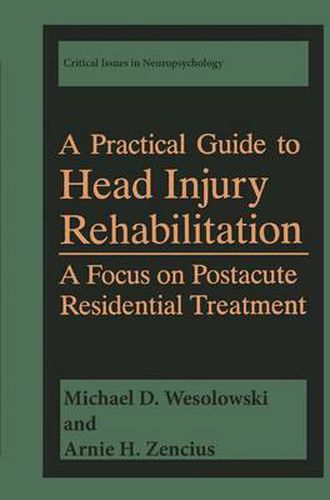Readings Newsletter
Become a Readings Member to make your shopping experience even easier.
Sign in or sign up for free!
You’re not far away from qualifying for FREE standard shipping within Australia
You’ve qualified for FREE standard shipping within Australia
The cart is loading…






This title is printed to order. This book may have been self-published. If so, we cannot guarantee the quality of the content. In the main most books will have gone through the editing process however some may not. We therefore suggest that you be aware of this before ordering this book. If in doubt check either the author or publisher’s details as we are unable to accept any returns unless they are faulty. Please contact us if you have any questions.
Behavioral neuropsychology presents at once achallenge and an opportunity for the field ofbehavior analysis. A great diversity of problem areas-including education, classroom management, child rearing, retardation, and industry have been treated effectively by the behavior analytic approach, which has traditionally and quite deliberately chosen to deemphasize physiology and cognitive variables. Yet brain injury, by its nature, entails neurological insult that is often closely related to specific cognitive dysfunctions. The challenge for behavior analysis is to develop effective treatments for a disorder with such clearly defined tripartite characteristics. The opportunity exists for be havior analysis to expand its conceptual basis as well as to provide benefits to patients otherwise despairing of assistance. Case histories demonstrate over 20 years of successful applications of behavior analysis to brain-injured in dividuals, indicating that some applications are possible, but are these reports notable exceptions or the harbingers of a new general therapeutic approach? The present book describes an overall focused behaviaral program far dealing with the diversity of brain injury problems in a general brain injury rehabilitation setting. The authors describe what types of neurological damage are associated with specific types of cognitive/emotional dysfunction and in turn with specific types ofbehavioral dysfunction, thereby demonstrating how the choice ofbehavioral treatment is guided by the neurological and subjective assessment. The result is a conceptually unified approach. The distinctive value of this book lies in the detail as well as the pro grammatic guidelines for actual implementation ofthis behavioral approach.
$9.00 standard shipping within Australia
FREE standard shipping within Australia for orders over $100.00
Express & International shipping calculated at checkout
Stock availability can be subject to change without notice. We recommend calling the shop or contacting our online team to check availability of low stock items. Please see our Shopping Online page for more details.
This title is printed to order. This book may have been self-published. If so, we cannot guarantee the quality of the content. In the main most books will have gone through the editing process however some may not. We therefore suggest that you be aware of this before ordering this book. If in doubt check either the author or publisher’s details as we are unable to accept any returns unless they are faulty. Please contact us if you have any questions.
Behavioral neuropsychology presents at once achallenge and an opportunity for the field ofbehavior analysis. A great diversity of problem areas-including education, classroom management, child rearing, retardation, and industry have been treated effectively by the behavior analytic approach, which has traditionally and quite deliberately chosen to deemphasize physiology and cognitive variables. Yet brain injury, by its nature, entails neurological insult that is often closely related to specific cognitive dysfunctions. The challenge for behavior analysis is to develop effective treatments for a disorder with such clearly defined tripartite characteristics. The opportunity exists for be havior analysis to expand its conceptual basis as well as to provide benefits to patients otherwise despairing of assistance. Case histories demonstrate over 20 years of successful applications of behavior analysis to brain-injured in dividuals, indicating that some applications are possible, but are these reports notable exceptions or the harbingers of a new general therapeutic approach? The present book describes an overall focused behaviaral program far dealing with the diversity of brain injury problems in a general brain injury rehabilitation setting. The authors describe what types of neurological damage are associated with specific types of cognitive/emotional dysfunction and in turn with specific types ofbehavioral dysfunction, thereby demonstrating how the choice ofbehavioral treatment is guided by the neurological and subjective assessment. The result is a conceptually unified approach. The distinctive value of this book lies in the detail as well as the pro grammatic guidelines for actual implementation ofthis behavioral approach.